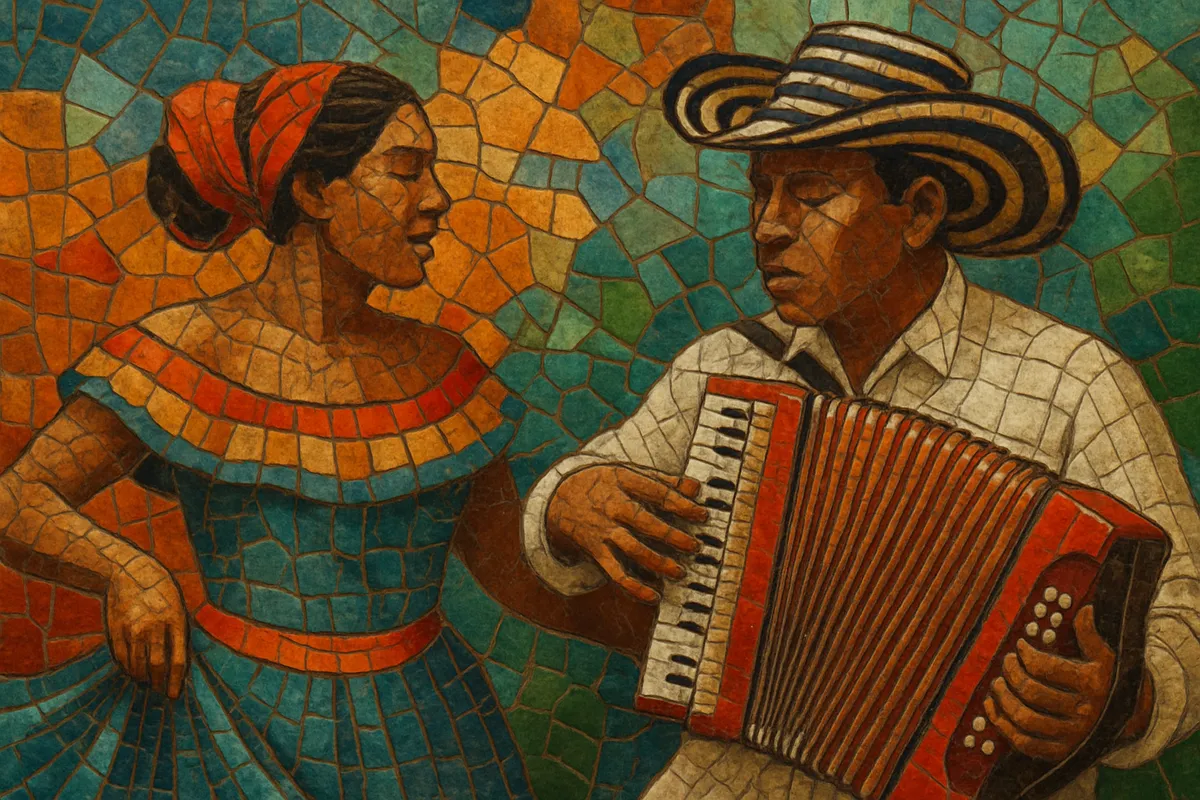Cumbia colombiana is the foundational, coastal style of cumbia that emerged on Colombia’s Caribbean littoral. It fuses Indigenous gaita flute traditions, Afro-Colombian drumming, and Iberian melodic sensibilities into a hypnotic, swaying dance music.
Traditional ensembles center on gaita hembra and gaita macho flutes, a three-drum battery (tambora, alegre, and llamador), and maracas; later urban and big-band formats added brass, accordion, electric bass, and piano. The groove sits in 2/4 or relaxed 4/4 with a characteristic tresillo and offbeat maraca chatter, while melodies often trace minor or Dorian contours. Its earthy, processional feel—once associated with candlelit courtship dances—became a national sound and a pan–Latin blueprint for countless cumbia variants.
Cumbia’s matrix formed on Colombia’s Caribbean coast through contact among Indigenous (gaita flute and dance), African (polyrhythmic drumming, call-and-response), and Iberian (song forms, harmony) traditions. By the early 20th century, rural festejos around the Magdalena River featured the classic gaitas-and-drums format. In the 1940s, coastal musicians began codifying these practices into a recognizable genre for dance halls and radio, giving rise to modern cumbia colombiana.
Bandleaders such as Lucho Bermúdez and Pacho Galán arranged cumbias for big-band instrumentation, integrating clarinets, trumpets, trombones, and piano while retaining the rhythmic DNA of tambora, alegre, llamador, and maracas. Record labels in Barranquilla and Cartagena helped standardize the repertoire and spread it nationally. Ensembles like Pedro Laza y Sus Pelayeros and Los Corraleros de Majagual popularized both rootsy and orchestrated approaches.
Artists including Andrés Landero and Aniceto Molina foregrounded the accordion, aligning cumbia with vallenato circuits and exporting the sound across Latin America. At the same time, groups such as Los Gaiteros de San Jacinto safeguarded the ancestral gaitas-and-drums practice. Colombian recordings fueled new scenes in Mexico, Peru, Argentina, and Chile, where local bands reinterpreted the style.
Colombian cumbia remains a touchstone for contemporary hybrids—electronic, pop, and alternative—while traditional gaitero ensembles continue to perform at festivals and ceremonies. The genre’s rhythmic cell and melodic phrasing underpin modern variants from cumbia villera and sonidera to digital cumbia and cumbiatón, testifying to the enduring pull of the Colombian blueprint.


